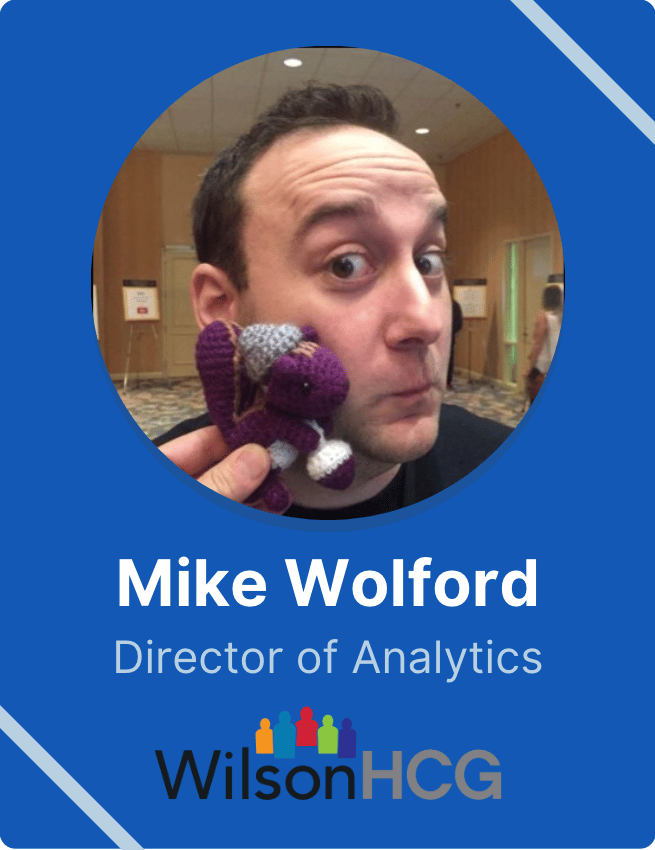A new technological revolution is upon us: transportation is going electric, energy production is shifting to renewables, AI is already here and Web3 is coming sooner than most people think.
It is a turning point for talent acquisition with new specializations popping up each year and an ever-increasing skills gap. Companies can only move forward based on the merits of their tech talent and technical recruiters are the only people who can help find them.
That is why we created the Tech Recruiting Times. We wanted to fill the gap of content for tech recruiters and engineering leaders and help prepare the people on the front lines of these changes.
Every two weeks we will offer advice, opinions, and breaking news through interviews with the industry’s leading professionals.
We hope you enjoy this week’s issue!
This week’s topic
Why is talent acquisition always the first out the door when there is economic turbulence? How can TA be seen more as a resource for R&D, and less as a cost center?

This week’s guest: Mike Wolford

Mike Wolford is a Talent Acquisition Leader with more than 18 years of experience in the industry. He has held Sr. recruiting roles at Capital One, Nielsen, and REI Systems. He has built sourcing teams from scratch and laid the foundation for companies’ recruiting processes and strategies. Mike specializes in a wide variety of tech roles from AI and Data Scientists to Cybersecurity and Python developers.
Most recently, he was the Information Technology Sourcing Manager at Twitter where he managed the Blue Bird Sourcing Team and created an agency cost savings of nearly 2 million dollars in their first year. He also had a significant impact on the diversity of their engineering department with his sourcing team increasing the number of women and ethnic groups represented by an average of 10%. Mike’s other passion is writing where he has been a contributing editor for Recruiting Daily for the last 6 years. Currently, he is the Director of Analytics with Wilson HCG.
1. Can you talk a little bit about today’s labor market and what makes it exceptional? I’m thinking about the severe mismatch between supply and demand for tech talent, for example.
It’s interesting, people will fight the data that they don’t like. We live in a time where there’s not just data, but a political take on the data. The exact same information from the exact same sources is being either treated with complete contempt or complete respect.
For example, if you listen to the news, you’re going to hear recession. But the labor market data is telling the exact opposite story.
In 2019, certain people loved the economic data — 7.2 million open jobs were considered high.
Then, one of the hallmarks of the last two recessions (the one in 2008, and the one in 2020) was increasing unemployment.
Now in 2022, according to the Department of Labor’s monthly report, unemployment has continued to drop throughout the year and there are 11.2 million open jobs.
We even added 375,000 jobs in July.
For context, at the height of the pandemic in April 2020, the labor market was at its bottom at 4.5 million open jobs.

We’ve been using this report for 50 years, and the nice thing about this data is it’s trustworthy. Even if their methods aren’t necessarily pristine, they have been consistently applied — which means the information is at least directionally accurate.
Analyzing the trends in these reports, you can clearly see there’s no set of circumstances in American economic history where that kind of job growth has ever happened before. You’re talking about 7 million net jobs in a period of about 18 months.
It’s unprecedented growth. So I think that’s worth noting and one of the reasons talent acquisition needs to actually get their act together and start being more data-driven.
2. What do you think of tech companies making layoffs, budget cuts, and hiring freezes and that being the primary narrative in the business community?
The first thing happening is that the companies we know and have heard of are failing.
However, no one should panic. It would be like panicking because Blockbuster is going into bankruptcy. If that happened in 1992, it would be a big deal. But today? It’s not a big deal.
Let’s take Google as another example. For forever, Google was number one on the internet. Undisputed, unchallenged, unbeatable. But text-based searching is a 20-year-old technology today. Inevitably, the market will go around that, and now, they’re being replaced by Tiktok as the number one search engine.
So initially, when there are layoffs at Google and Meta, and Twitter, it feels like the markets having layoffs. But the reality is, the market is just picking new leaders, and the people that we think of and hear of all the time today are going the way of Sears and Kmart, and MySpace.
On the flip side, what’s driving the economy? Where did all the jobs come from? This actually is the strength of capitalism. What’s happening right now is a drastic change in two of the major underpinnings of our entire economy.
The first one is how we make the energy to power our homes and move our cars: the shift to renewables. All of that is changing. And for capitalists, the positive side is it’s changing for the cheaper. Renewables are now at the tipping point where they’re less expensive than traditional oil, gas, and coal. Plus, the federal government has just invested $300 billion in renewable energy in the United States.

And, it’s not just us. In Europe, there’s a massive push right now to make their own electricity, particularly after this winter. Political factors are at play — they don’t want to deal with Russia anymore. So it’s not just monetarily, but politically expedient.
Batteries are also a really important part of the renewable energy equation — though it doesn’t always make the headlines. Battery technology makes energy cheaper, and those cost savings go to your entire economy. Saving one person $20 a month, $50 a month is low impact, but saving 300 million people $50 a month unleashes the economic potential of the American consumer.
American business and manufacturing. Bitcoin and all of these technology companies also use a fair amount of energy. So if you can lower that cost, it trickles through the entire economy, which creates an economic boom.
The second major driver of this hypergrowth of jobs is the move to electric vehicles.
Electricity, energy, and transportation are being changed simultaneously because if you’re going to build all these solar plants, you might as well build charging stations. Plus its supply line — has to be built. All of that nickel and lithium and iron have to be mined. And all the plastic has to be made. It’s a completely new supply chain that has to get built from the ground up.
It’s happening as we speak. If you go outside, you’ll see electric cars on the road. 10 years ago, you would not see an electric car on the road. It happens slowly, and that’s why we don’t perceive it until somebody calls it out.
3. Bringing it back to talent acquisition, why is it that we’re always the first out the door when this kind of economic turbulence starts to happen?
It’s because we’re not a source of information. The thing that needs to happen to TA is we need to become data-driven.
The CEO, the CFO, and the CTO all talk to each other in numbers. Whoever is in charge of the sales pipeline will come into the meeting and say, “This is our goal, we’re X percentage of the way there and we’re on target to meet our goal.” Then the CFO will say, “Here is last month’s budget. We spent 10% more money than we thought we were going to spend, and here’s what we spent it on and why”.
Then TA comes in and says, “We hired a bunch of people, a bunch of people quit, and we had birthday cakes.” This just doesn’t have the same immediate and tangible value.

The sole value that we provide, as far as most companies view TA at the moment, is placing people. And when that’s your only value in times of crisis or there is no more growth, then you are first out the door.
Since we have already discussed there actually isn’t a recession in the labor market, TA needs to combat that misconception with actual facts and data. If tech companies only get economic data from the news (which is paid to be consistently negative), then whenever the news is bad, you’ll be out of a job
However, this is actually a use case for TA to make a change.
There’s nobody in the room to tell the CEO why this labor market is so unique. Baby boomers are finally retiring en masse because, by 2030, they will be over 75. We’re coming to the end of their working time, and people are exiting the labor market. At the same time, there’s lower participation from the working-age population in the most important roles to keep society functioning.
Then there’s specialization. When I started recruiting, a software engineer was basically one of two things. Today, a software engineer could be one of a hundred things. As roles continue to specialize, companies will come into a worse position, because not only are there going to be fewer people, there will be fewer with that specific specialty.
Let’s take Tesla as an example. If you’re Tesla, you’re hiring AI engineers to help train your car to drive. But that same AI expert might not be all that valuable to Watson IBM.
The real picture of the future is the exact opposite of four people waiting in a lobby for a chance to interview. It’s for companies sitting in a lobby, and the candidate specialist is sitting in the office deciding where they’re going to apply their talent.
4. Where can TA start to prevent this and become more data-driven?
Focusing on retention is a great place to start for TA. There’s no accountability for retention. And realistically, retention is the biggest recruiting expense there is. Because every dollar you invest in retention is probably $5 you save in recruiting.
But to focus on retention means that companies need to rethink the way they do their salaries. Implementing pay transparency is a really good step in the right direction.
Let’s say you have AI experts working for you. If you’re curious about what an AI expert is making at another company, you need somebody to dig through Payscale and Glassdoor and tell you a rough estimate.
But as we have more laws requiring salary disclosure in job descriptions, managers are going to be able to look at their competitors’ JDs and notice, “Wow, my competitor is offering $30,000 more than I paid anybody.” They don’t even know that that’s a problem until you educate them with the data.
Recruiters need to be the ones who facilitate this and curate this data.
For example, the recruiter and hiring manager currently spend so much time arguing over $5,000 on a salary, and that is completely absurd.
We talk for a living, and yet we don’t say, “The unemployment figure in the market we want is 2%. After doing a search, the total number of people who can do this job is 1000. That means that there is a max of 20 people who are unemployed, in this popular field, and I’m not going to find all of them.
So we have to go into this assuming that whoever I present to you is passive. Here is what the market is paying for this talent today, I can’t control it if you want to pay less. All I can show you is what our competition is offering the same talent in the market right now and they have 10 open positions.”
This is a fundamentally different and data-driven conversation. You can then present 3 candidates in the intake and say, “I’ve done my research, I’ve looked at 175 resumes and talked to 18 out of them. And these are the best 3, would you be interested in talking to some of these people? Am I on the right track here?”

We need to be like accountants. An accountant would go to a meeting “The way we’re doing our interviews is costing us an extra 14 days to time-to-fill. And on average, that’s an additional $1,274 per candidate that we interview. We’re incurring a cost. And we interview 5000 people a year.”
If TA delivers measurable results, eventually the business will come to trust them. Even better, we need to build and gain their trust before we actually deliver anything.
The typical hiring manager is used to hearing from recruiters “the candidates are coming” and “we emailed 150 people without getting a reply”. But if we come in prepared and informed, give them warm candidates, all the market and salary information upfront, it’s night and day. They notice the difference quickly and respond accordingly.
You really only change the industry bottom up — and this is our opportunity to do it, in this very moment, when there’s so much confusion about what’s really happening. We can step up and shine and tell businesses that we can do so much more than find you people. We can provide you with the organized data and context you need to make business decisions.
5. You can start to think of talent acquisition almost as R&D, because they can look at the market and see, why they are laying people off while other companies are hiring. They can see who these companies are hiring and why they are hiring them. How can we reframe the conversation when we speak to business leaders?
By tying our performance directly to bottom line impact.
We’re seen as a cost center. So you do anything you can to reduce time-to-fill, agency spending, etc. An accountant would tell you that every dollar of cost savings is $5 of sales. And we need to highlight that. Not only is it $2 million in cost savings, and $10 billion in additional revenue, that’s our bottom line impact on the finances.
In order to be able to articulate that, we first have to be able to understand what our pipelines are doing, where our bottlenecks are, and how much they are actually costing. That’s what everyone cares about. Every time we ask for a new tool, there’s a war.
But if you go in and you say, “I need $10,000 to invest in a tool that’s going to cut three days off of our time-to-fill, that’ll save us $427 per candidate, and we interview 3000 people a year. That’s why I want that $10,000.”
If you frame it that way, you’ll get that tool.
The exciting part of recruiting is that somebody gives you a requisition and then you have to go out into the world with your magic wand and make a human being appear. It’s intellectually challenging, especially at first, because you have to figure out, “Where are these people? How am I going to get a hold of them?”
And eventually, you figure out that questions like “How do I get my hiring manager to be reasonable the first time I’m trying to make an offer?” or “How do I build trust and a relationship with my hiring managers?” are just as important.
So we need to address the gap in business acumen lessons, finance courses, and leadership classes. Recruiters today need to know how to manage P&L, how to talk to executives, and how to handle reporting at scale.
Wrapping Up
For more up-to-date information about the state of tech recruiting, upskilling your sourcing team, and the best recruitment tech to use, check out our blog.
Interested in learning more about how Celential is accelerating the development of AI solutions to recruiting problems?
Table of Contents
































